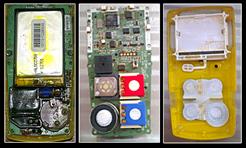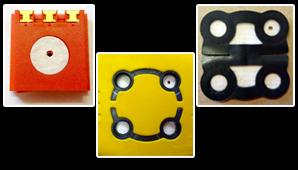A 'bump" or "challenge" test of your gas detector will determine whether the unit is responding to gas and thus fit for use. Not only does the bump/challenge test verify the unit will respond to gas, but it also confirms that the detectors audio and visual alarms are in working order meaning that out in the field, you will be able to hear/feel/see when your detector goes into alarm if/when exposed to gas.
We have heard many excuses over the years as to why someone hasn't / doesn't want to bump test their personal gas detector, from: "I don't have time", "I am not sure how to do it", "it costs too much", "I never use the detector anyway" and so forth... Let us ask you, how much time/money is your life worth? I bet your families would think that it is worth more than the 30 seconds it takes to carry out a bump test or the cost to set up a kit to do so.
How long does a Bump Test take?
It only takes 30 seconds!
Manually a bump/challenge test will take between 40 to 60 seconds for the gas to respond and activate the alarms.
Via a calibration dock, most bump tests will take up to 30 seconds.
What is the Frequency for bump testing my gas detector?
"It is recommended that this is done by personnel actually operating the apparatus and is strongly recommended that it is performed before each day of use” [AS/NZ 60079.29.2:2016 Selection, installation, use and maintenance of detectors]
“Gas monitors used for the purpose of atmospheric monitoring within a confined space should be maintained and used in accordance with manufacturer’s instructions and warnings and in reference to AS/NZS 60079” [AS 2865:2009 Confined Space Safe Work Australia Exposure Standards]
“Any atmospheric testing and monitoring in a confined space should be carried out by a competent person using a suitable, correctly calibrated gas detector” [Safe Work Australia: Code of Practice Confined Spaces]
Each Manufacturer's recommendations will suggest a frequency for testing their detector.
BW Technologies by Honeywell states:
"As stated in BW Technologies multi-gas detector manuals, to verify that your detector is responding to gas, BW recommends bump testing the sensors before each day’s use. The bump test exposes the detector to a gas concentration that exceeds the alarm set points to confirm the sensor’s ability to respond. Manually verify that the audible and visual alarms are activated. Calibrate if the readings are not within the specified limits. Taking less than a minute, a functional (bump) test is easy to perform and will ensure that the gas detector is responding and the gas path is not blocked."
What do I need to bump test my portable gas detector?
Manual Calibration
- Gas Cylinder with mix-to-suit detector
- Fixed Flow Regulator (DFR for pump module)
- Calibration Cup to suit detector
- Tubing
Automated via a Calibration Dock
- Calibration Dock to suit gas detector
- Gas Cylinder with mix-to-suit detector
- DFR Regulator
- Tubing
What else should I consider when challenge-testing my portable gas detector?
Complete an external check of your detector by checking the:
- sensor filters - are not blocked with dirt, mud, chemicals, or any other foreign substance that will impede the sensors from responding to gases in the atmosphere
- external housing - missing screws and cracks in the housing or LCD screen
- missing parts - clothes clip, compliance/certification sticker
These might not seem like much but they can influence the integrity of your unit. Below are some samples of damage discovered when a gas monitor was opened for inspection during a manual bump test and calibration carried out in the Aegis Sales & Service workshop.
 |
 |
 |
| Water Damage | Punctured Filter and CO Sensor | Damaged H2S sensor |
How will you know if your instrument has failed the bump/challenge test?
- the sensor readings will be outside of the manufacturer's allowable range
- the audible alarm will be very soft and hard to hear
- the visual alarms are not working
What do I do if my instrument fails the bump/challenge test?
- the sensor readings are outside of the manufacturer's allowable range - calibrate the instrument or repair
- the audible alarm will be very soft and hard to hear - return the instrument to your service agent for service and/or repair
- the visual alarms are not working - return the instrument to your servcie agent for service and/or repair
contact us to book your portable gas detector in for a Calibration & Service.










